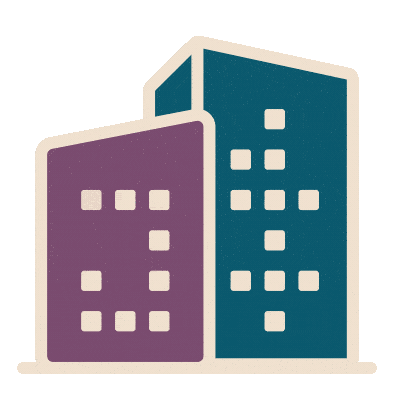Driving Innovation: Spotlight on dsquared Consulting
Meet the small but mighty consulting firm driving sustainable design solutions in Australia.
Known for its world-class arts and comedy festivals, food and wine, Adelaide, Australia’s fifth-most populous city, is also a progressive city of doers—probably why it’s affectionately nicknamed “Radelaide” by savvy Aussies. The capital of South Australia, Adelaide, has been consistently ranked among Economist Intelligence Unit’s top 10 most livable cities globally and was recently announced as Australia’s first Cisco Lighthouse City—a Smart Cities initiative to fold technology into the fabric of urban planning and social policy. A snapshot of this progressive city’s credentials is a necessary backdrop to introduce dsquared, a sustainability consulting firm and part of the driving force in Adelaide’s innovative agenda.
Paul Davy and Deborah Davidson co-founded dsquared consulting eight years ago. Their small but mighty firm offers sustainable solutions for “spaces, places and communities” and epitomizes the DIY attitude that makes Adelaide a progressive force in many areas, including sustainable design. dsquared has long been an advocate for WELL and has recently led Lot Fourteen, the redevelopment of the old Royal Adelaide Hospital precinct, to WELL Community Precertification—an Australian first.

Image above: Lot Fourteen has achieved WELL Community Precertification and 6 Star Green Star Communities. Image courtesy of Renewal SA.
We sat down with Paul, co-founder and director at dsquared, to find out what drives their team, their region and why WELL makes sense for the city of Adelaide.
Tell us about dsquared and when you became involved in WELL?
“dsquared is a specialist studio with a mission to reduce the impact on the environment through ecologically sustainable design. We do this by providing innovative solutions, challenging perceived thinking, and pushing boundaries to use all resources in a sustainable way. We connected with IWBI just as WELL arrived in Australia and have been keen advocates of the movement ever since. We know that buildings need to sustain people, not just limit their impact on the environment, and so for us, WELL should be considered the new normal.”
Your team, for the most part, are all WELL APs. What enticed you to pursue the WELL AP credential?
“We wanted to be appropriately qualified and accredited before offering WELL support to our clients, and the WELL AP credential provides us with a pathway to connect to IWBI for training, continual professional development and shared learning. Anyone interesting in wellness in buildings, wanting to learn more about creating healthy built environments should consider obtaining their WELL AP credential.”
What does sustainability mean to dsquared—has this changed over time?
“True sustainability and innovation go hand in hand. We have to keep encouraging and pushing new solutions, better ways of doing things and continually improving our efforts towards a zero impact future. We have seen a dramatic shift in a positive direction in the past three years with the smart money chasing the climate agenda, and we are sure that the catastrophic climate events that have impacted Australia in the last 6 months will create an even faster rate of change.”
As a small but mighty sustainability firm, dsquared has brought some exciting projects to WELL, and we constantly hear that Aussie projects lead the world in terms of health and well-being. What’s driving the focus on WELL in Australia and, also specifically in South Australia?
“Australians, on the whole, enjoy an outdoor lifestyle and a connection with the natural environment. When asked, people “get” the concept of feeling well and they readily understand how the built environment can support our health. Additionally, the financial returns on investing in health and well-being are significantly higher than more traditional sustainability topics such as energy efficiency. This has helped to garner the support of CEOs and CFOs and has driven a significant change in building and tenancy briefs and budgets, which now include WELL in addition to NABERS and Green Star. Another area we’re seeing traction is in healthcare. We’re working with the South Australian Health & Medical Research Institute (SAHMRI) and Wellbeing SA, a state-wide public health initiative, to embed WELL concepts into the next generation of hospital projects in the state.”
Tell us more about one of the WELL projects you’re working on—what’s inspiring you?
“Our most recent registered WELL project is Flinders University’s new Health & Medical Research Building. The enthusiasm and depth of engagement in the WELL journey from Flinders University and the design team has been exhilarating—the notion of creating a research building that sets new standards for the well-being of research staff is driving innovation, and the team has demonstrated leadership by using WELL to advance wellness in an environment that can typically be very challenging.”
What building sector do you think could benefit from a greater focus on health and well-being interventions in Australia?
“Two building sectors which would benefit are research/laboratory buildings and industrial/manufacturing facilities. Historically, both building typologies have demonstrated a tendency to focus on process outcomes at the expense of genuine staff wellness. We believe it is possible to create process buildings that operate efficiently and cost-effectively whilst also offering a workplace of choice for health-conscious staff.”

Image above: “Grenfell 50, pursuing WELL Certification, is an interesting project as it involves taking two adjacent office buildings, joining them together, adding a floor, and changing the facade—as well as a complete new re-fit and services.” Image courtesy Kambitsis Group and Cheesman Architects.
Editor’s note: In light of the global public health crisis, we asked Paul a follow-up question.
How do you anticipate your work will be affected or transform in light of the global coronavirus pandemic?
“The question of how to deal with this issue places people’s health at the forefront. We have already been fielding questions on our projects in design about how they can offer environments that are “safer” from a health perspective, looking at issues of ventilation filtration, and contactless doors, water fittings and so on. We tend to work in a more virtual environment with our design input communicated electronically, and often attending meetings interstate via video/teleconference to keep our carbon footprint down, so while the current work practice changes are in place this hasn’t impacted much on how we operate as a business.”
Follow the progress of Lot Fourteen to see a WELL community vision realized. The team at dsquared are WELL APs and their firm is an IWBI Cornerstone member.






